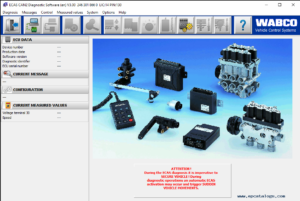The tool I’m going to mention is most likely the one of the most valuable tools a diagnostic tech can carry with themselves at all times. It weighs just a couple of ounces and is hardly noticeable in your front pocket. It is a simple tool that can vastly ease your diagnostics ………………and even pull you out of a bind, even if you are using the best factory software. This wonderful little tool is the Bendix Diagnostic Link Monitoring Tool (DLMU).
The Bendix® Data Links Monitoring Unit (DLMU™) is a diagnostic tool that provides the technician with a visual indication of all of the components that are active on the J1708 and J1939 communication circuits. Once the DLMU™ unit is attached to the 9-pin (or 6-pin with a separate adapter) diagnostic connector located of that vehicle, the data links monitoring unit indicates the following components on the available J1708 or J1939 circuits:
Controller LED Indicator Data Link
- Engine Controller J1708/J1939
- Transmission Controller J1708/J1939
- Brake Controller J1708/J1939
- Body Controller J1939
- IP Cluster J1708
- Cluster J1939
If the DMLU does not detect any of the devices on either the J1939 or J1708 link, it will indicate this by illuminating each red LED individually in a clockwise pattern.
THE NEXT STATEMENT IS WHY THE BENDIX DIAGNOSTIC LINK MONITORING UNIT (DLMU) SO VALUABLE
When the DMLU is connected to the 9-pin connector (or 6-pin connector using a separate adapter cable) it creates a circuit between the positive & negative pins, this tells each of the control units (ECM, TCM, ABS, etc.) to begin to transmit faults codes, if any are noted. This shows the diagnostic tech the following information:
1. Positive & negative control module (ECM, TCM, ABS, etc.) circuit & wiring is working condition
2. The control module (ECM, TCM, ABS, etc.) is working & can send codes
3. The J1708 & J1939 circuit wiring is working
Without the DLMU, if you connect a laptop computer with factory [or aftermarket] software to the truck & you cannot communicate, the problem could be any of the following:
- USB plug or wire
- Faulty interface
- Improper interface settings
- Improper interface drivers
- Adapter cable between the interface & truck is faulty
- Truck wiring between the 6 / 9 / OBD2 plug & the control module faulty
- Faulty control module
By using the DMLU, any problem between the truck diagnostic plug and any control module can be eliminated as part of your diagnostic process. This includes wiring. By first plugging in the DLMU you will immediately know that any further connection with a laptop computer that the truck has good control modules & related wiring. Plus, if you are working in the field & don’t have a laptop with you, it’s still possible to perform basic diagnostics & clear codes. If you are working with a laptop & are having difficulty with diagnostic connections, whip out your DLMU & have it help you eliminate problems.
If the DLMU™ does not detect any J1939 or J1708 devices, it will indicate this by lighting each red LED a clockwise sequence. This pattern indicates no response from any of the requested devices. This will continue until a device responds or the tool is disconnected from the diagnostic connector. So, if you were to see this lighting sequence, you’d immediately know that connecting your laptop to that truck would be wasted time. You could then notify the customer and update your estimate.
Possible sources of communication issues with the DLMU are:
- J1708 or J1939 communication is not present at the diagnostic connector
- ECM, etc. or the diagnostic connector has no power
- The DLMU™ monitoring unit cannot arbitrate bus access
- Malfunctioning DLMU™ unit
OPERATION of the DMLU
- DLMU™ unit is first plugged into the 9-pin / 6 pin diagnostic connector, and receives power, the green VLT LED is illuminated (indicating the data links monitoring tool is receiving power)
- The DLMU™ unit will then monitor the various electronic components and illuminate red LEDs to indicate which components responded to the request or are broadcasting on the data links.



